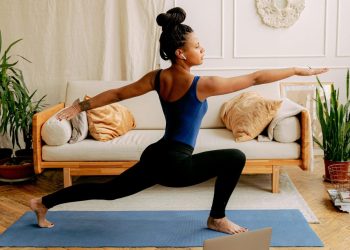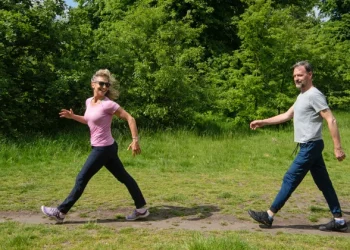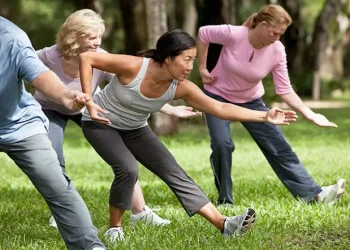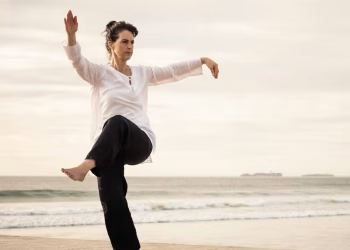Walking is often taken for granted as one of the most basic human movements, yet it represents a remarkably complex coordination of multiple body systems working in harmony. The seemingly simple act of putting one foot in front of the other requires the integration of sensory input, balance mechanisms, muscle coordination, and cognitive processing. When these elements align properly, walking becomes effortless and efficient. However, many people develop compensatory movement patterns, experience declining coordination with age, or face challenges after injury or prolonged inactivity. Walking coordination exercises offer a pathway to reclaim or enhance this fundamental movement skill, improving not only how we walk but our overall movement quality, stability, and confidence in daily activities.
Understanding Walking Coordination
Before diving into specific exercises, it’s essential to understand what coordination actually means in the context of walking. Coordination refers to the ability to use different parts of the body together smoothly and efficiently. During walking, this involves the rhythmic alternation of the legs, the counter-rotation of the upper body, the maintenance of balance over a constantly shifting base of support, and the continuous adjustment to environmental demands like uneven surfaces or obstacles.
Walking coordination relies on three primary systems working together. The vestibular system in the inner ear provides information about head position and movement through space. The proprioceptive system, consisting of receptors in muscles, tendons, and joints, informs the brain about body position and movement. The visual system helps us navigate our environment and anticipate changes in terrain. When these systems communicate effectively with the motor control centers of the brain, we achieve fluid, coordinated movement.
As we age or become sedentary, these systems can become less efficient. The good news is that coordination is a skill that can be trained and improved at any age through targeted exercises. These exercises challenge the neuromuscular system in progressively complex ways, rebuilding the neural pathways that support coordinated movement.
Foundational Walking Coordination Exercises
The journey toward improved walking coordination begins with exercises that establish fundamental patterns and awareness. Tandem walking serves as an excellent starting point. This exercise involves walking in a straight line while placing one foot directly in front of the other, heel to toe, as if walking on a tightrope. This narrow base of support challenges your balance system and requires precise coordination between the legs. Begin by practicing this movement for short distances of ten to fifteen feet, using a wall or counter for light support if needed. As you become more comfortable, try tandem walking without support, and eventually progress to performing the exercise with your eyes closed for brief intervals, which removes visual input and forces greater reliance on proprioception and vestibular function.
High-knee marching represents another foundational exercise that emphasizes the lifting phase of the gait cycle. Stand tall and march in place, lifting each knee to hip height while maintaining an upright posture. The arms should swing naturally in opposition to the legs, meaning the right arm swings forward as the left leg lifts. This cross-body pattern is fundamental to normal walking mechanics. Perform this exercise slowly at first, focusing on control and coordination rather than speed. As you improve, march forward through space, then add variations such as marching backward or in a circle, which require additional motor planning and coordination.
Grapevine walking, also known as the carioca drill, introduces lateral movement and rotational coordination. Stand with feet hip-width apart and step sideways with your right foot. Cross your left foot behind your right, then step right again, and cross your left foot in front of your right. Continue this pattern moving laterally across a space. This exercise challenges the brain to coordinate a more complex stepping pattern while maintaining balance and requiring rotation through the hips and torso. The crossing movements also improve hip mobility and strengthen the muscles that stabilize the pelvis during walking.
Balance Integration Through Dynamic Exercises
While coordination and balance are distinct qualities, they are intimately connected during walking. Single-leg balance work forms the foundation of dynamic balance during gait. Begin with simple single-leg stands, holding the position for thirty seconds on each leg. Once this becomes comfortable, progress to single-leg balance with eyes closed, which dramatically increases the challenge by removing visual compensation. Further advancement comes from adding upper body movements while balancing on one leg, such as reaching your arms overhead, out to the sides, or rotating your torso, which more closely mimics the demands of real-world walking where the upper body moves independently of the lower body.
Clock reaches take single-leg balance to a functional level. Stand on your right leg and imagine you’re standing in the center of a clock face. Reach your left leg toward twelve o’clock in front of you, return to center, then reach toward three o’clock to the side, return to center, then reach toward six o’clock behind you. Continue reaching toward different “times” on the clock, which challenges your balance in multiple directions. This exercise improves the stability needed to maintain balance when walking becomes unpredictable, such as when navigating crowded spaces or reaching for objects while moving.
Weight shift walking develops the controlled weight transfer that underlies smooth gait. Stand with feet hip-width apart and slowly shift your weight completely onto your right foot, lifting the left foot just slightly off the ground. Pause, then slowly transfer your weight to the left foot. This deliberate practice of the weight shift that occurs with every step helps develop awareness of how weight transfers through the foot, from heel to midfoot to toe. Progress this exercise by walking very slowly forward, pausing on each step to ensure complete weight transfer before lifting the back foot. This mindful approach helps correct common coordination problems like shuffling or incomplete weight shifts that can lead to falls.
Movement Quality Enhancement Exercises
Movement quality refers to how efficiently and smoothly you execute a movement pattern. Poor movement quality during walking often manifests as limping, shuffling, asymmetry, or excessive energy expenditure. Specific exercises can address these issues and promote more refined movement patterns.
Heel-to-toe walking emphasizes the natural rolling motion of the foot during gait. Walk forward, consciously landing on your heel first and rolling through the foot to push off from the toes. This may seem overly simple, but many people develop flat-footed walking patterns that bypass this natural roll, reducing efficiency and increasing stress on joints. By practicing exaggerated heel-to-toe movement, you retrain the proper foot mechanics. Once the pattern feels natural walking forward, try it backward, which reverses the sequence and provides a novel coordination challenge.
Opposite arm and leg reaches improve cross-body coordination, which is essential for the natural arm swing that counterbalances leg movement during walking. Stand on your right leg and simultaneously extend your left arm forward and overhead while extending your right leg behind you, creating a straight line from fingertips to toes. Hold this position for three to five seconds, focusing on maintaining balance and alignment. Return to standing and repeat on the opposite side. This exercise strengthens the connections between opposite limbs and improves the coordinated arm swing that many people lose when walking becomes hesitant or fearful.
Variable speed walking trains the neuromuscular system to adapt to different movement demands. Walk at a comfortable pace for twenty steps, then increase to a brisk pace for ten steps, slow to a very slow, deliberate pace for ten steps, and return to your comfortable pace. These changes require your nervous system to continuously adjust muscle activation patterns, timing, and coordination. The transitions between speeds are particularly valuable, as they demand quick motor adjustments. Add further complexity by combining speed changes with direction changes, such as walking forward quickly, then transitioning to slow backward walking, which requires sophisticated motor control.
Cognitive Integration and Dual-Task Training
Walking coordination isn’t purely physical; it also requires cognitive resources for motor planning, environmental awareness, and adaptive responses. Dual-task walking exercises challenge this cognitive component. Start by walking while counting backward from one hundred by sevens, or by naming as many animals as you can think of. The competing cognitive task requires your brain to allocate resources between movement control and mental processing, similar to real-world situations where you might walk while having a conversation or thinking about your destination. As you improve, add physical challenges to the dual-task scenario, such as walking on a narrow path while performing cognitive tasks, or walking while carrying objects that alter your center of gravity.
Pattern walking introduces increasingly complex stepping sequences that require motor planning and memory. Create a simple pattern such as three steps forward, two steps to the right, one step back, two steps to the left, then repeat. Walk through this pattern until it becomes smooth, then create more elaborate patterns. This exercise improves the executive function aspects of motor control, strengthening the brain’s ability to plan, sequence, and execute coordinated movements. The cognitive demand of remembering and executing the pattern while maintaining balance and coordination provides comprehensive neuromotor training.
Progression and Integration
Improvement in walking coordination comes from progressive challenge. Begin with the foundational exercises and gradually increase difficulty by adding complexity, reducing support, removing visual input, or combining multiple challenges simultaneously. A person just beginning coordination training might start with supported tandem walking for short distances, while someone more advanced might perform tandem walking backward with eyes closed while carrying an object. The key is finding your current level and pushing just slightly beyond it.
Integration into daily life amplifies the benefits of dedicated exercise practice. Look for opportunities to practice coordination skills throughout your day. Walk heel to toe down your hallway. Practice single-leg balance while brushing your teeth. Take the stairs using exaggerated high steps. These micro-practices accumulate into significant improvements over time and help transfer the coordination gained in exercise to functional movement in daily activities.
Walking coordination exercises offer a powerful tool for enhancing one of our most fundamental movement patterns. Through consistent practice of exercises that challenge balance, coordination, and movement quality, we can walk more efficiently, confidently, and safely. These exercises benefit everyone, from older adults looking to maintain independence and prevent falls, to athletes seeking to optimize movement efficiency, to people recovering from injury or illness who need to rebuild motor control. The beauty of coordination training is its accessibility; most exercises require no equipment and can be performed in small spaces. Start where you are, progress at your own pace, and trust that your nervous system will respond to the challenges you provide. Better walking coordination isn’t just about how we move from one place to another; it’s about moving through life with greater confidence, capability, and connection to our bodies.






